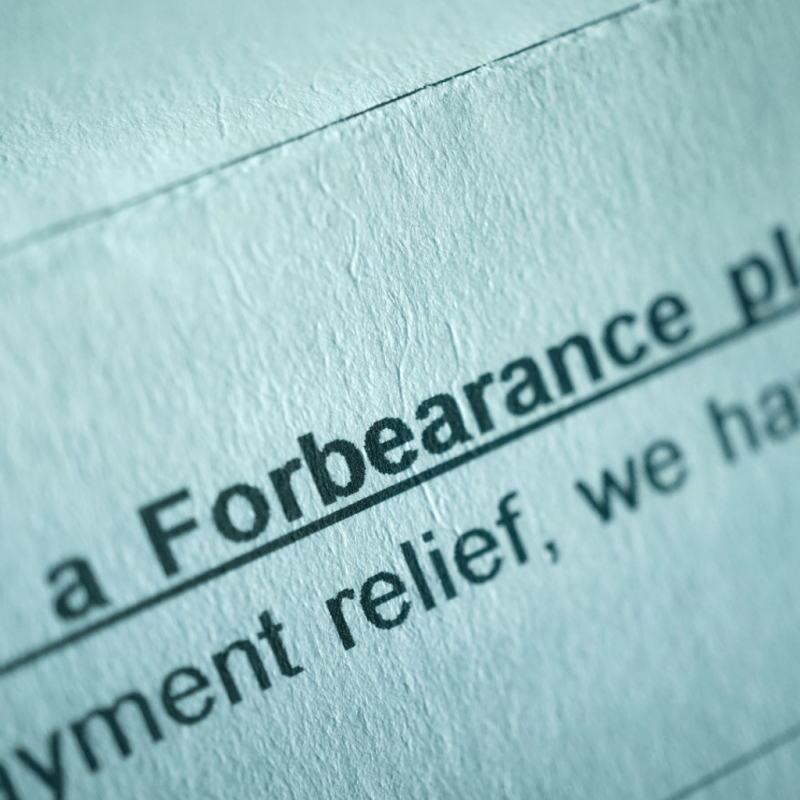Can I Refinance My Home While In Forbearance – It didn’t take long for the coronavirus (COVID-19) to put Americans in financial trouble. According to various sources, every fifth adult is unemployed. The uncertainty of the pandemic has many homeowners wondering how they will make their mortgage payments.
A quick search for mortgage assistance programs usually brings up two options: defer and file. So, if you can not pay in the future, which way to go? And is it better to give a preference to borrowers?
Can I Refinance My Home While In Forbearance
Let’s start with the program that attracts the most attention. Mortgage loans allow borrowers to suspend their payments for a certain period of time. Furthermore, the children can stay in their home and not worry about foreclosure.
Today’s Mortgage And Refinance Rates For November 14 And 15
It should come as no surprise that more than 3 million loans are already in default. The recently passed CARES Act allows borrowers with federal mortgages to request foreclosure for up to 12 months. However, an alarming number of homeowners either do not understand how payments are made or their lenders do not provide all payment options.
This is an important first step in moving forward with patience. Keep in mind that most home loans in the US are owned by Freddie Mac, Fannie Mae and Ginnie Mae. These government loans include FHA, VA, and USDA mortgages.
But how do you know who owes your debt? We recommend checking with your servicer, as the last thing you want to do is assume your mortgage falls into this category. Policies for borrowers differ depending on whether their loans are secured by Fannie, Freddie or Ginny as opposed to a private investor.
Ultimately, it depends on your situation. If you’ve just been laid off, but you’ll soon be back to your regular paycheck, patience may not do you any good. In fact, many financial experts advise using this option of mortgage assistance as a last resort.
Alternatives To Forbearance
So do whatever it takes to keep paying your mortgage. Apply for unemployment, work part-time in another industry, get rid of unnecessary expenses – whatever. Still, it’s good to know that patience is available when you need it.
Many borrowers are reluctant to pursue forbearance because of concerns it could affect their credit. Fortunately, this will not show up as negative activity on your credit report. Just remember to communicate with your tolerant lender.
Think of mortgage deferral as temporarily freezing your payments and adding them to the end of the term. What makes deferment attractive to borrowers is that no interest accrues during that time. Best of all, after the term ends, you continue with your regularly scheduled payments.
Similar to forbearance, borrowers can remain in forbearance for up to one year. But don’t treat it as a paid vacation. If you can somehow keep up with your monthly mortgage payments, do it.
How Does A Mortgage Forbearance Affect Future Borrowing?
Technically, yes. Deferment offers more flexibility because you get immediate mortgage assistance and don’t have to make missed payments until the end of the loan. Patience, on the other hand, will cost more if your payments continue.
Late mortgage payments will not negatively affect your credit. Again, it’s important to get the OK from your lender before suspending payments. Borrowers who fail to do so are more likely to take a credit hit and face the possibility of foreclosure.
Most importantly, the rules of patience and procrastination are constantly changing. While mortgage assistance programs are designed to provide much-needed assistance, they are not all created equal. You can start by contacting your lender and asking them to find the right solution for your needs.
Let our team of experts guide you through the process of getting a personal loan that will save you money. Fannie Mae’s low-income refinance program is now available to more homeowners after the lender expanded the program to include those who missed payments due to COVID-19 filings. (iStock)
What Is Refinancing?
In early June, Fannie Mae and Freddie Mac introduced a new refinancing option for low-income homeowners that will save them $100 to $250 per month. Now, Fannie Mae has announced an update to the program that will also allow homeowners in forbearance due to COVID-19 to take advantage of refinancing opportunities.
If you’re thinking about refinancing your mortgage, you can use Credible to find out the options and interest rates available to you.
Under pre-conditions, Fannie Mae requires homeowners not to miss a single home loan payment in the past six months and to make only one missed payment in the past 12 months. And while it’s a lower requirement than what’s usually required for a mortgage refinance, this week’s update makes it more clear who qualifies for a refinance.
Now, borrowers who have missed mortgage payments in the past 12 months can still refinance if certain conditions are met because they are in a COVID-related forbearance period. Fannie Mae requires homeowners to be current on their mortgages before using RefiNow’s low-income refinancing option. However, there is more than one way for homeowners to meet this requirement.
Can I Refinance My Home After Forbearance?
If you’re interested in finding out if you qualify for a low-income refinance through Fannie Mae, visit Credible to speak with a home loan specialist and get all your questions answered.
One way for homeowners to stay on top of their mortgage is to simply catch up on missed payments. This will make them eligible for the Fannie Mae refinancing option. However, this is not possible for many.
Fannie Mae also offers several loss mitigation solutions that keep a homeowner eligible for refinancing. Here’s how a homeowner with a Fannie Mae-backed mortgage can get a current home loan:
If a homeowner has another loss reduction program not listed, they must complete the program or make three full monthly payments. If they meet these requirements, low-income homeowners will be eligible to refinance their mortgage through Fannie Mae’s RefiNow program.
Why Should I Refinance My Home?
To better understand what refinancing options are available to you, you can contact Credible to connect with a lender.
Other requirements for the program include an income greater than 80% of the area median income, a loan secured by Fannie Mae or Freddie Mac, having at least 3% equity in the home and a credit score of at least 620.
All of these are lower requirements than a typical mortgage refinance, and the goal of the program is to allow those most affected by the COVID-19 pandemic to benefit from today’s historically low interest rates by saving on their mortgage refinance and monthly payments.
Check credit to see how much you can save, and see rates from multiple lenders at once.
Mortgage Forbearance: Cares Act, End Date, And What You Need To Know
Have a finance question but don’t know who to ask? Email a Credible Money Expert at moneyexpert@credible.com and Credible can answer your question in our Money Expert column. A question that often comes up in this COVID-19 environment is, “What if you have a mortgage and it defaults?” In response to these financial difficulties, the federal government has announced plans to provide relief to many homeowners who cannot keep up with their mortgage payments. In this episode, we’ll talk about how foreclosures affect conventional mortgages.
Many borrowers have already mentioned this, and luckily we have these answers for them. Other borrowers didn’t mention it before and we were getting to the end of the closing and suddenly we were extending the loan. We update our credit report. We see, hey, your mortgage balance has increased by more than the normal interest amount. Two or three payments almost became expensive. what happened
Their lender allowed them to forbear, and they took advantage of it. Why not? They call us, we hope they are patient. What do they need to fund? Because they cannot receive funding until certain requirements are met. There are two different situations that we will discuss: the first is that you are returning to work after a forbearance, and the second is that you have suffered a hardship and cannot afford to pay for rehabilitation but need a payment plan instead.
You may decide, “You know, it’s good that we missed those payments, but let’s pay them now.” Then you call the servicer, find out what you owe for those three months, write a check and get reimbursed for your work, and your balance is brought back to its current repaid status. If you’re in that bucket, you can move forward with your new mortgage, no problem. There is a small star that if you go back to work after applying for the loan we may have to get these funds, where did you get this money to go back to work? But until you are in front of the app again, there should be no source.
What Should A Homeowner Do When The Mortgage Forbearance Has Ended
The situation is different
Can you refinance while on forbearance, can i refinance my home loan while in forbearance, can i refinance my mortgage while in forbearance, can i refinance my home while in forbearance, can you refinance mortgage while in forbearance, can i refinance while on forbearance, can i refinance while in forbearance, refinance mortgage while in forbearance, refinance while in forbearance, refinance while on forbearance, can you refinance while in forbearance, can you refinance your home while in forbearance








